仿生机器人的机构设计与运动仿真
43页 15000字数+说明书+答辩稿+开题报告+文献综述+外文翻译+proe三维图+34张CAD图纸【详情如下】
proe三维图.rar
proe运动仿真视频.rar
robo程序.rar
wing002-liang-30.dwg
wing003-liang-120.dwg
wing004-zhengfangti.dwg
wing005-挡块.dwg
wing006-接头销.dwg
wing007-liang-15.dwg
wing008-zhengfang-kong.dwg
wing009-zhuanjiao.dwg
wing010-杆.dwg
wing011-suo.dwg
wing012-zhengfang-cao.dwg
wing013-liang-60.dwg
wing014-liangshuangtou-15.dwg
wing015-bianzhengfang.dwg
wing016-杆.dwg
wing017-ka.dwg
wing018-销钉.dwg
wing019-changfang.dwg
wing020-zhengfang-shuangtou.dwg
wing021-齿套.dwg
wing022-封板.dwg
wing023-轴卡.dwg
wing025-键-销.dwg
wing026-板链接块.dwg
wing027-轴套.dwg
wing028-轴.dwg
wing029-杆.dwg
wing030-jiaozhang.dwg
wing031-齿轮.dwg
wing032-qvzhou.dwg
仿生机器人的机构设计与运动仿真开题报告.doc
仿生机器人的机构设计与运动仿真论文答辩稿.ppt
仿生机器人的机构设计与运动仿真说明书.doc
外文翻译---通用回归神经网络在声呐目标分类中的应用.doc
总装配图.dwg
文献综述.doc
机器人骨架.dwg
猪笼草.dwg
论文封面目录.doc
足装配图.dwg
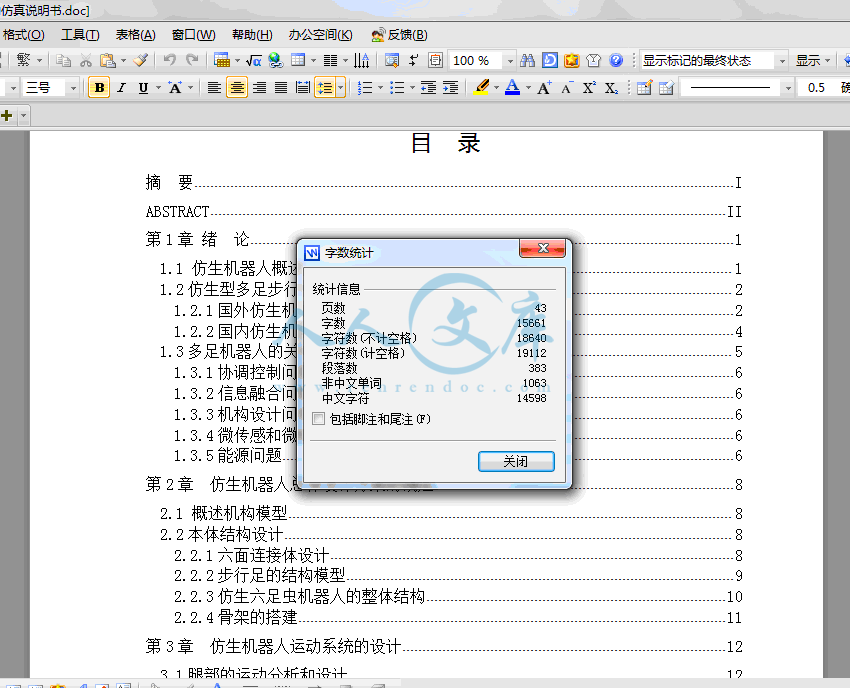
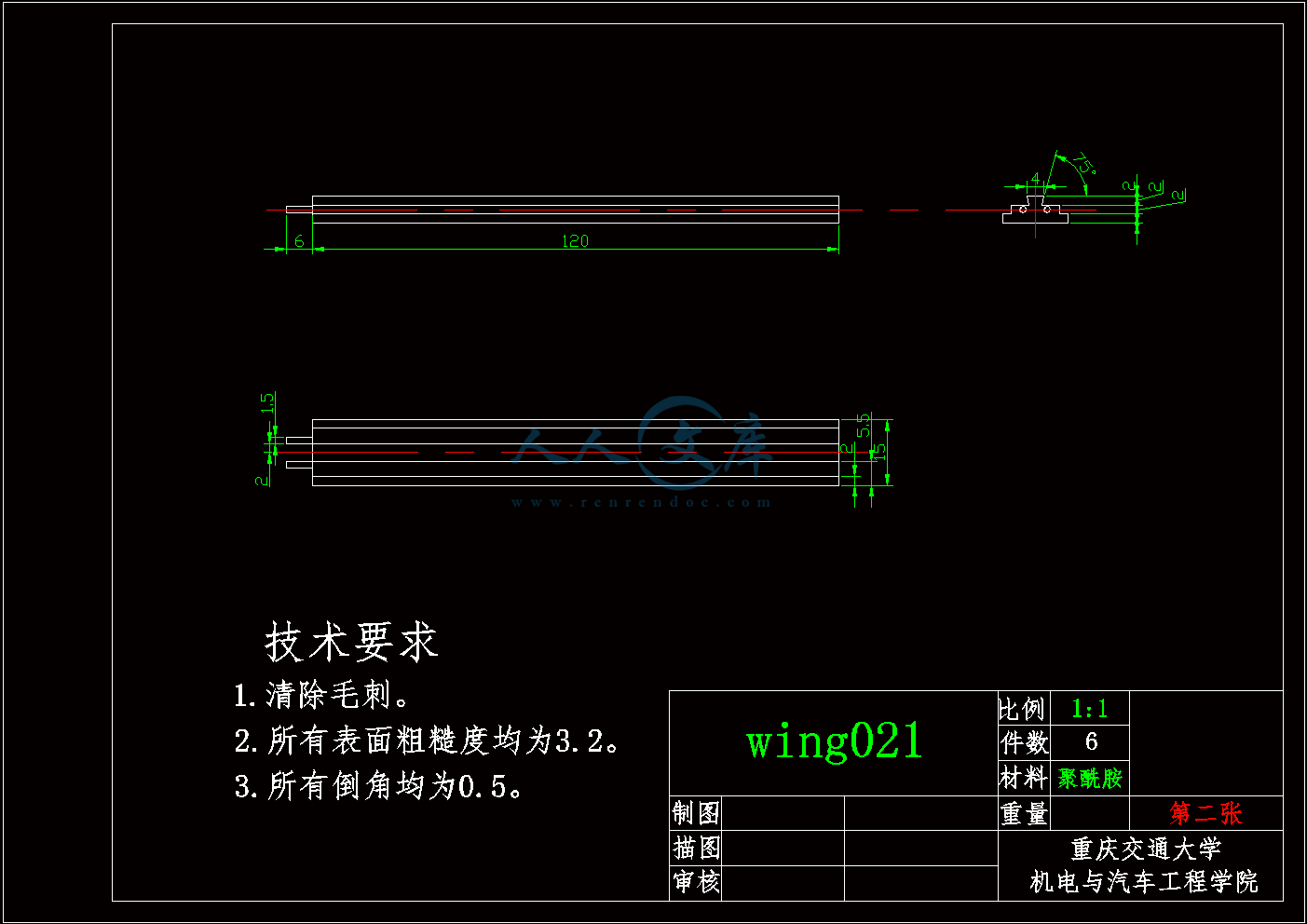
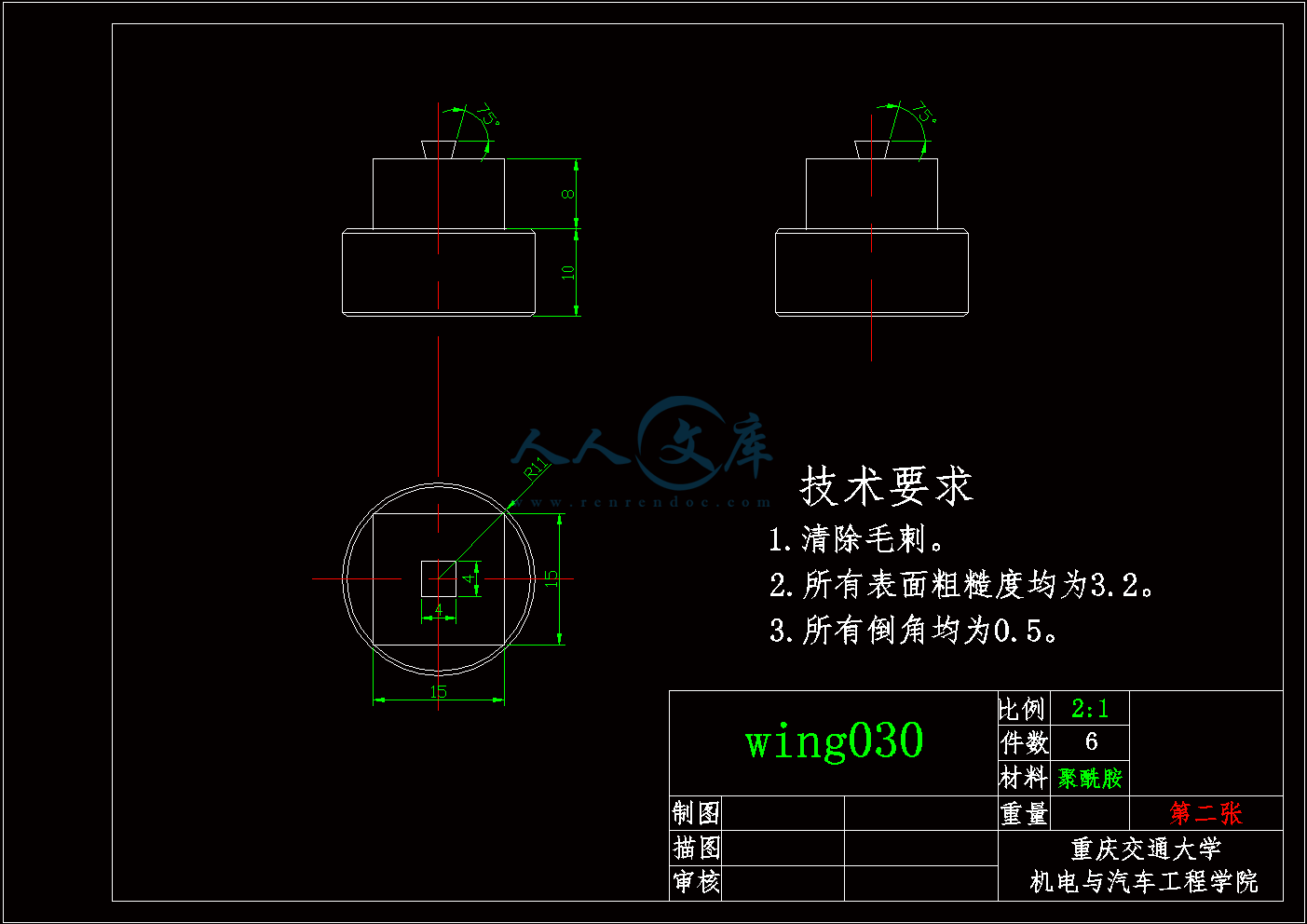


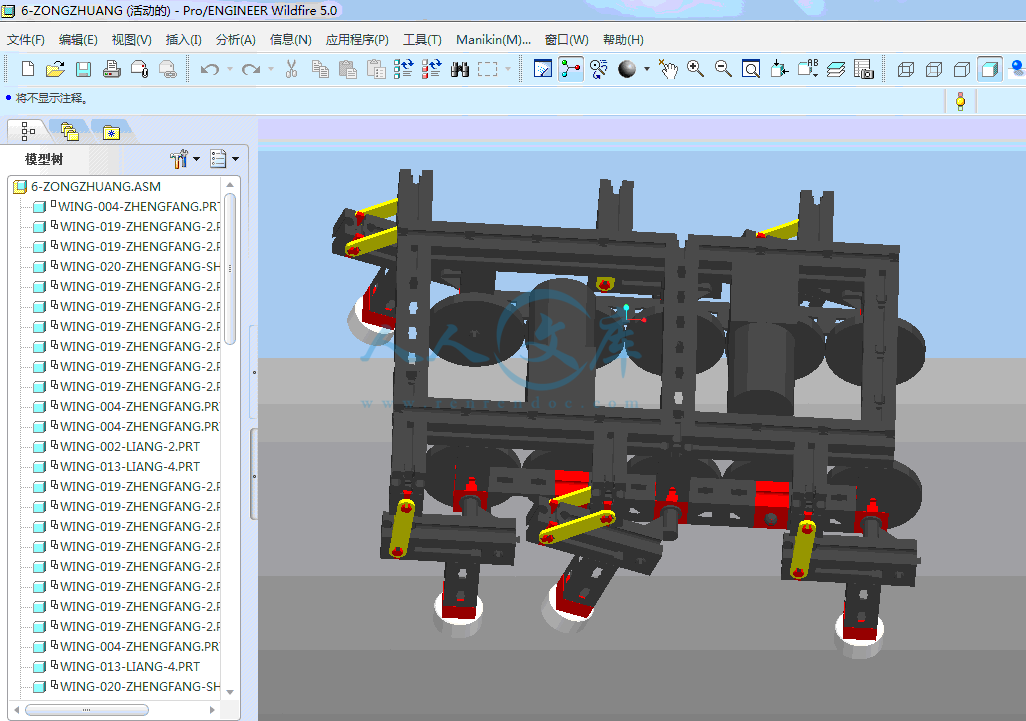




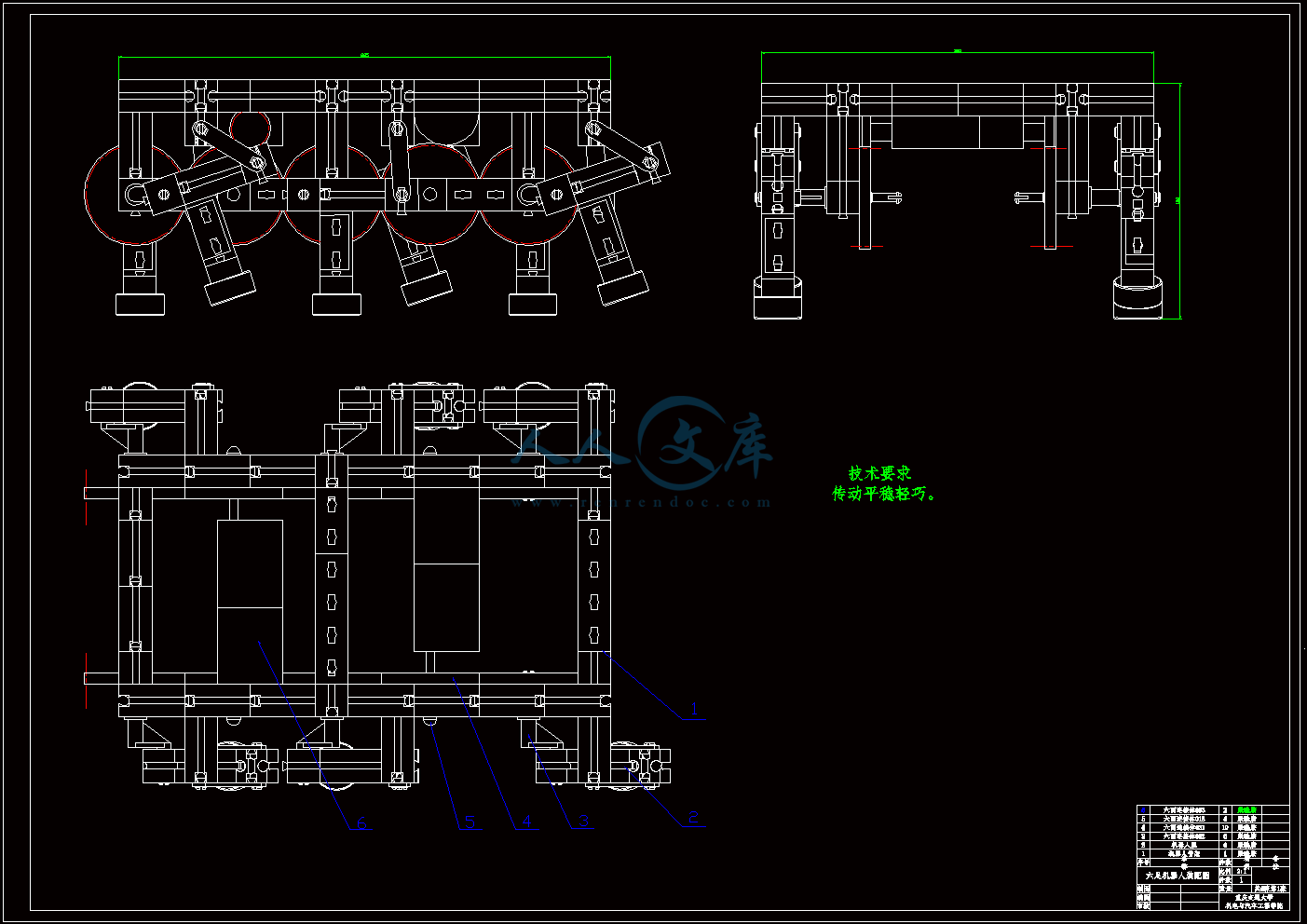

目 录
摘 要I
ABSTRACTII
第1章 绪 论1
1.1 仿生机器人概述1
1.2仿生型多足步行机器人技术综述2
1.2.1国外仿生机器人研究现状2
1.2.2国内仿生机器人的研究现状4
1.3多足机器人的关键技术5
1.3.1协调控制问题6
1.3.2信息融合问题6
1.3.3机构设计问题6
1.3.4微传感和微驱动问题6
1.3.5能源问题6
第2章 仿生机器人总体设计方案的确定8
2.1 概述机构模型8
2.2本体结构设计8
2.2.1六面连接体设计8
2.2.2步行足的结构模型9
2.2.3仿生六足虫机器人的整体结构10
2.2.4骨架的搭建11
第3章 仿生机器人运动系统的设计12
3.1腿部的运动分析和设计12
3.2传动部分结构设计12
3.3步态规划及分析13
3.3.1关于步态的参数描述13
3.3.2 三角步态运动原理14
第4章 控制系统的设计16
4.1控制的硬件系统设计16
4.2慧鱼 ROBO接口板介绍16
4.2.1 外形尺寸和重量16
4.2.2 电源9V直流,1000M16
4.2.3 处理器和存储器16
4.2.4 输出M1-M4或者O1-O816
4.2.5 数字量输入I1-I817
4.2.6 模拟阻抗输入AX和AY17
4.2.7 模拟电压输入A1和A217
4.2.8 距离传感器输入D1和D217
4.2.9 红外线(IR)输入17
4.2.10 USB接口和串口17
4.2.11 接口的选择18
4.2.12 端口的固定设置18
4.2.13 红外测试功能18
4.2.14 26针插槽18
4.2.15 I/O扩展板用插槽19
4.2.16 无线射频通信模块用插槽19
4.2.17对接口板的程序控制19
4.3 ROBO接口板与机器人的连接22
4.4软件系统22
4.4.1软件介绍22
4.4.2运动规划22
4.4.3程序设计23
第5章 运动仿真26
5.1计算机仿真技术26
5.1.1基于proe的机器人运动仿真26
5.1.2实物仿真28
第6章 总结与展望30
致 谢31
参考文献32
摘 要
随着仿生学与机器人技术的飞速发展,仿生机器人已日益成为机器人领域的研究热点。本论文结合理论与实践,对仿生机器人的结构与控制系统进行了研究。
本论文主要研究内容包括仿生机器人的总体方案设计、驱动系统与运动系统的设计、运动控制系统的软硬件设计。总体方案设计主要讨论了仿生机器人的机械本体结构,机器人足的结构设计。驱动系统和运动系统主要分析了腿部的运动,机器人的运动规划和驱动系统结构。运动系统硬件设计是采用的慧鱼ROBO接口板。软件设计是结合慧鱼公司开发的编程软件(robot pro)进行编程。运用PROE对机器人进行运动仿真,并通过试验实现了设计要求。
关键词:仿生机器人,结构,控制,编程,运动仿真1.3.1协调控制问题
机器人的自由度越多,机构越复杂,必将导致控制系统的复杂化。复杂大系统的实现不能全靠子系统的堆积,要做到“整体大于组分之和”,同时要研究高效优化的控制算法才能使系统具有实时处理能力。
1.3.2信息融合问题
在仿生机器人的设计开发中,为实现对不同物体和未知环境的感知,都装备有一定量的传感器,多传感器的信息融合技术把分布在不同位置的多个同类或不同类的传感器所提供的局部境的不完整信息加以综合,消除多传感器信息之间可能存在的冗余和矛盾,从而提高系统决策、规划、反应的快速性和正确性。
1.3.3机构设计问题
合理的机构设计是仿生机器人实现的基础。生物的形态经过千百万年的进化,其结构特征极具合理性,而要用机械来完全仿制生物体几乎是不可能的,只有在充分研究生物肌体结构和运动特性的基础上提取其精髓进行简化,才能开发全方位关节机构和简单关节组成高灵活性的机器人机构。
1.3.4微传感和微驱动问题
微型仿生机器人作为仿生机器人中特殊的种类,绝不是传统常规机器人的按比例缩小,它的开发涉及到电磁、机械、热、光、化学、生物等多学科。对于微型仿生机器人的制造,需要解决一些工程上的问题。如动力源、驱动方式、传感器集成控制以及同外界的通讯等,实现微传感和微驱动的一个关键技术是机电光一体结合的微加工技术。同时,在设计时必须考虑到尺寸效应、新材料、新工艺等问题。
1.3.5能源问题
要使机器人在相对较广的范围内完成较长时间的复杂工作,能源问题是不得不考虑的。目前,广泛作为无缆机器人能源的电池还不能满足机器人长时间,大范围的工作要求。可以说新能源的开发研究,对机器人研究有着重要的意义。
 川公网安备: 51019002004831号
川公网安备: 51019002004831号